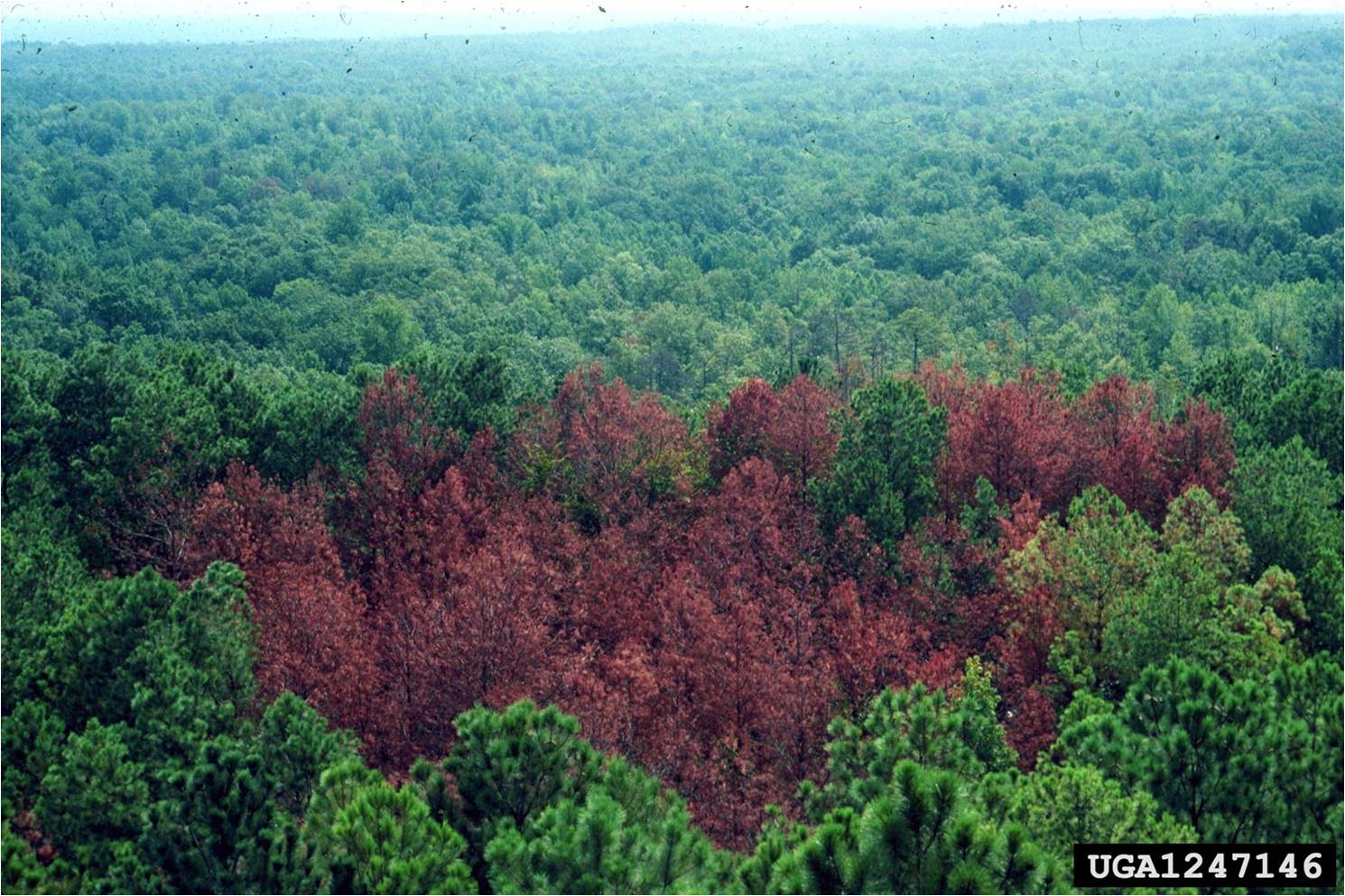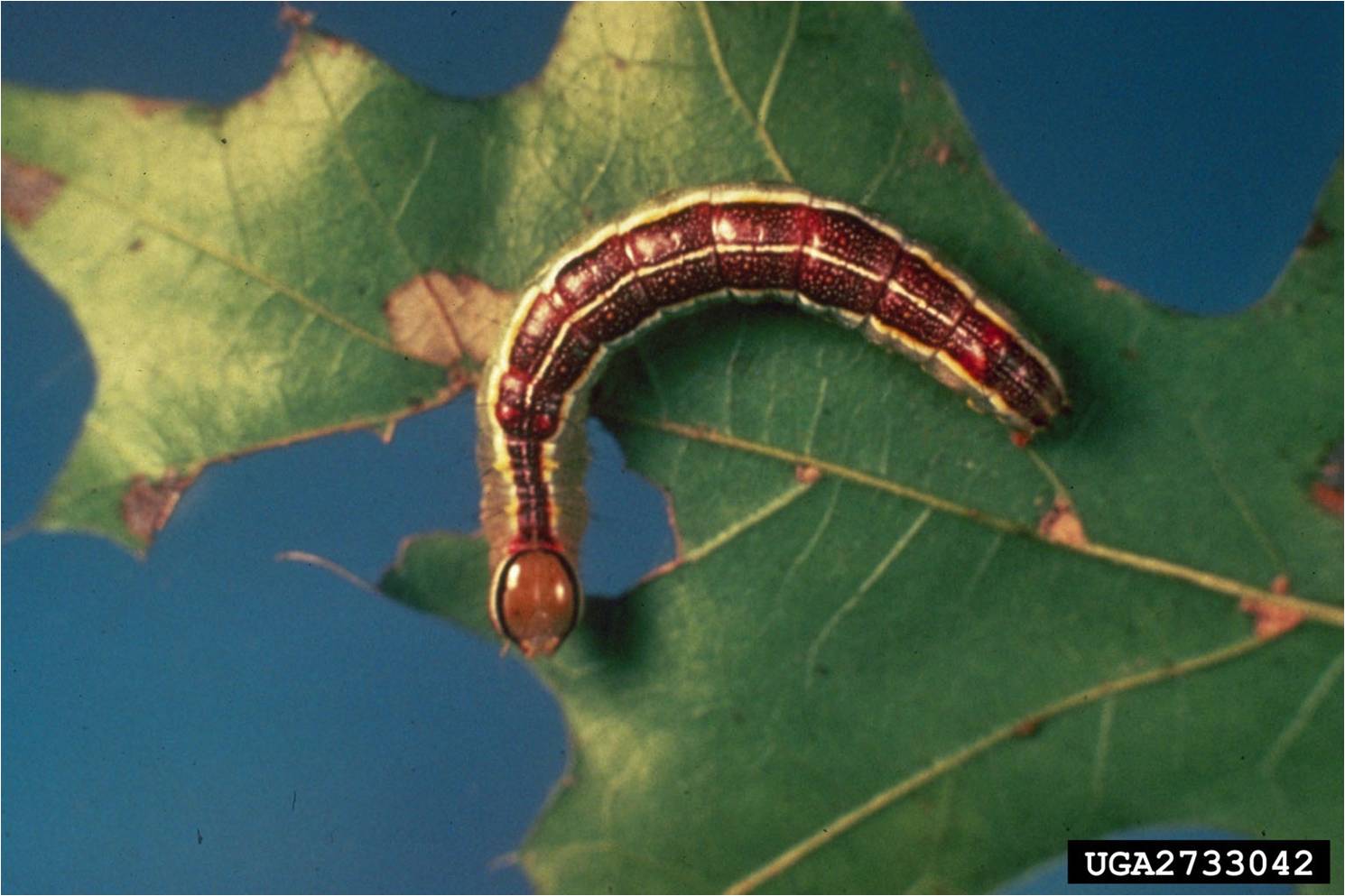Arkansas Forest Insects
Tree insect problems can range from a nuisance concern to an epidemic outbreak. They can occur in remote natural woodlands, forest plantations, in a park, or in someone's backyard. The University of Arkansas System Division of Agriculture has Extension foresters and pest specialists dedicated to helping to identify insects, assess problems, and provide potential solutions to limit insect damage to trees.
Below are photos of insect damage to Arkansas trees:

Southern Pine Beetle Damage |

Ips Gallery in a Pine Log |

Red Oak Borer Damage to a Oak Log |

Tip Moth Damage to a Pine Plantation |
Key Tree Types in Arkansas' Forests and Common Insects that Feed on Them
Pines Tree Insect Damage
Pines are valuable for their utilization in the pulp and timber industry. They provide habitat for wildlife. They are important environmentally for water quality, carbon sequestration, and other values. There are two primary pines in Arkansas: Loblolly and shortleaf pine (Pinus teada and Pinus enchinata).
Common Pine Tree Insects:
| Insect | Description |
|---|---|
|
Ips beetle  |
IPS beetle (Ips avulsus, Ips grandicollis, and Ips calligraphus)
|
|
Southern Pine Beetle
 |
Southern pine beetle (Dendroctonus frontalis)
|
|
Nantucket Pine Tip Moth
 |
Nantucket pine tip moth (Rhyacionia frustrana)
|
|
Pales Weevil
 |
Pales weevil (Hylobius pales)
|
|
Pine Webworm
|
Pine webworm (Tetralopha robustella)
|
Oaks
Oak trees provide multiple benefits. They provide wood for pulp and specialty timber products, such as flooring and cabinetry. They also provide essential wildlife habitat for many animals.
Common oak insects:
Ash Tree Insect Problems
White ash and green ash (Fraxinus Americana and Fraxinus Pennsylvanica) - Important tree in specialty wood products, such as handles and wood baseball bats. High aesthetic value, wildlife values and environmental values.
Common ash insects:
| Insect | Description |
|---|---|
|
Emerald Ash Borer  |
Emerald ash borer (Agrilus planipennis)
|
Hickories, Maples, and Other Hardwood Tree Insects
There are many hardwood species in Arkansas' forests. Hickories, maples, dogwoods, elms, and many others increase species diversity in the forestlands across the State. These species contribute to aesthetic, environmental, wildlife, and recreational values, along with some timber value. There are many species that are not specific to one species and will attack trees across species types.
Common multi-species Insects:
| Insect | Description |
|---|---|
|
Forest Tent Caterpillar  |
Forest Tent Caterpillar (Malacosoma disstria)
|
|
Carpenter Worm
 |
Carpenter worm (Prionoxystus robinae)
|
|
Aphids
 |
Aphids
|
|
Walkingstick
 |
Walkingstick (Diapheromera femorata)
|
Contact Us
Forest Resources
University of Arkansas System Division of Agriculture
Phone: 501-671-2197
Fax: 501-671-2110
University of Arkansas System Division of Agriculture
Cooperative Extension Service
2301 S. University Avenue
Little Rock, AR 72204
Publications
- Southern Pine Beetle
USDA Forest Service
- Insects and Diseases of Trees in the South
USDA Forest Service



